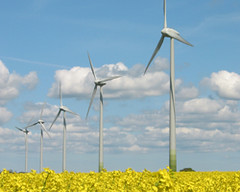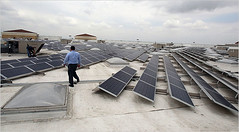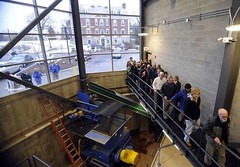
As a long-time fan of two-wheel transport, I've been disappointed that the motorcycle world has lagged behind automotive advances in clean-running sustainability. This concept design by Jordan Meadows, highlighted by GizMag, does much to open up new possibilities for motorcycle design without abandoning sustainable principles.
Jordan notes:
"The concept is powered by a v4 engine running on bio diesel. This increases the range and MPG well above conventional gasoline bikes while running on a fuel which is more environmentally-friendly. Its frame and skin are crafted from recycled aluminum.
"This has the advantage of saving weight to enhance performance while reclaiming pre-used material. In the manufacturing process, the alloy is treated to patina and age naturally without expensive and harmful paint applications.
In this age of looming Peak Oil, motorcycles have a lot to offer for individual transport and designs incorporating bio diesel fuel deserve more attention.


















